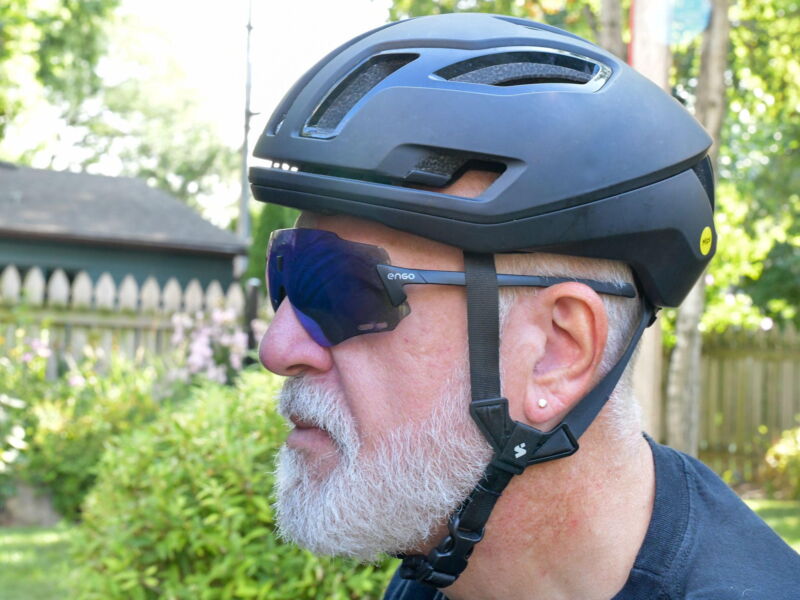
BradleyWarren Photography
When it comes to working out, I’m a data nerd. A Google spreadsheet contains every bike ride I’ve been on for the past four years, tracking data points ranging from average moving speed to normalized power output. Sometimes I ride just for fun—road cycling is one of my favorite activities, period—so I’m not always thinking about cadence and power curves when I’m on the bike. Fitness-focused rides, on the other hand, mean a lot of looking away from the road and down at my bike computer. That’s comfortable for me most of the time, but sometimes the cars are flying by or frost heaves are coming fast and furious, so the smart move is keeping my eyes down the road. So I was intrigued when I had a chance to check out ActiveLook’s Engo 2 augmented reality sunglasses with a built-in head-up display.
Priced at $299 (or $349 for photochromic lenses), the Engo 2 essentially takes data from your Garmin bike computer or fitness tracker, Apple Watch, Android Wear device, Suunto watch, or ActiveLook’s homegrown app and projects it toward the top inside part of the right lens. (Garmin is the only bike computer supported by ActiveLook.)

BradleyWarren Photography

BradleyWarren Photography
From most angles, the Engo 2 looks like a normal pair of sports-oriented sunglasses, with wide, curved, and extensive lenses. The only oddity is a small metal plate in the middle of the glasses, right over the bridge of the nose, which is a sensor. Swipe from left to right, and the display will switch to another view or shut off—if your finger isn’t too sweaty or your swipe is insufficiently forceful.
Beyond the head-up display, the two biggest differences between the Engo 2 and a pair of Oakleys are the heft and the mass stuff around the bridge of the Engo 2. At the top of the bridge are four gold squares, for connecting the charging cable. On the right is the projector, with a similarly weighted mass on the left side that serves the dual purpose of housing hardware and evenly distributing weight across the glasses. Instead of small pads, there’s a rubbery, inverted V that rests against your schnoz. This nose rest is easily adjustable for sniffers of all shapes and sizes.
I usually ride with a pair of Rockbros photochromic cycling glasses that I picked up for $30. Minimalist and lightweight, they competently perform all of the usual functions of cycling sunglasses at just under 28 grams. In contrast, the Engo 2 weighs 36 g for the regular and 41 g for the large, which I’ve been wearing. The first few times I put the Engo 2 on, I noticed the extra heft. But the more I wore them, the less I noticed the weight difference.
The Engo 2 comes with a nice carrying case, an insubstantial magnetic charging cable, a storage pouch, a strap, and a cleaning cloth.
Initial setup
I began by downloading the ActiveLook app from the App Store so I could set up the glasses. Press the power button, which is above the charging connector, and a tiny light will turn green. Then pair the phone with the app, which is easy and painless. Once paired, the app walks the user through the initial setup, including positioning the head-up display.
Download the WatchOS app, and you can pair the Engo 2 to an Apple Watch and start a workout without touching your phone. For cyclists, the data options from an Apple Watch are limited to the likes of heart rate, speed, elapsed time, and distance traveled. For runners, ActiveLook says that its AR glasses can display ground contact time, stride length, and vertical oscillation, among other metrics. My seven knee surgeries prevented me from giving this a try.




















+ There are no comments
Add yours